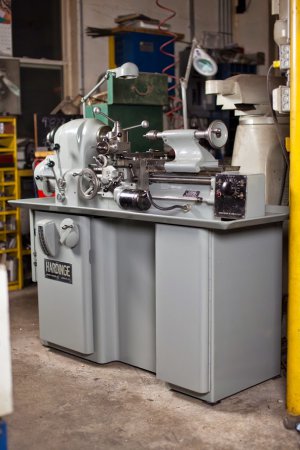- Joined
- Sep 10, 2013
- Messages
- 562
LOL I have a better chance of winning the Power ball than getting one of those out here in Colorado. I feel very lucky just gettting my Clausing, that was a 2 year ordeal as it was.I saw that article and thought about building his designs into my Colchester but lucked into a Hardinge HLV that has the features. It looks doable. The Hardinge and I think his design uses a double dog clutch one central drive with mating clutches on each side for forward and reverse. The clutch on the Hardinge is geared off the spindle before change gears, it can only drop in in two positions so probably is 2:1 reduction from the spindle, then it doesn't mater where it engages the tread will pick up. The Hardinge drops out within 0.001 carriage travel every time.
You have to run back under power which is slower than cranking it back, but when your threading at 6 or 800 rpm its pretty quick.
Saw plans for his quick retract somewhere, was pretty much the same design as Hardinge used. Works nice.
Good Luck
Greg
CH


